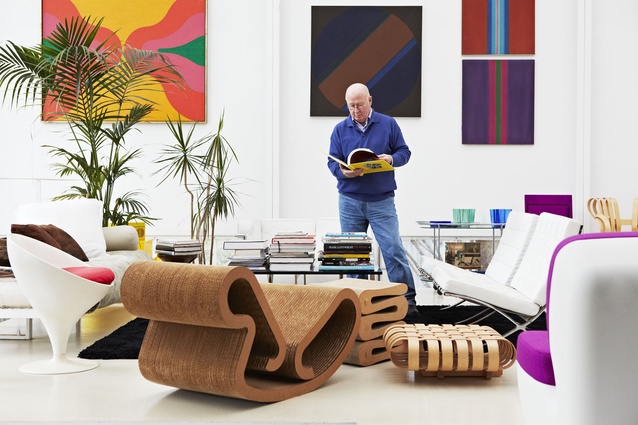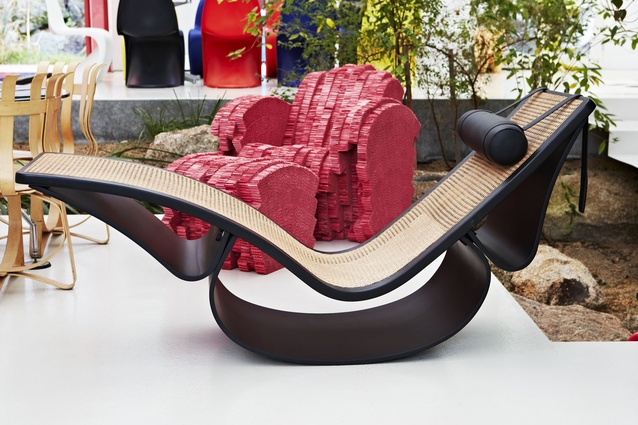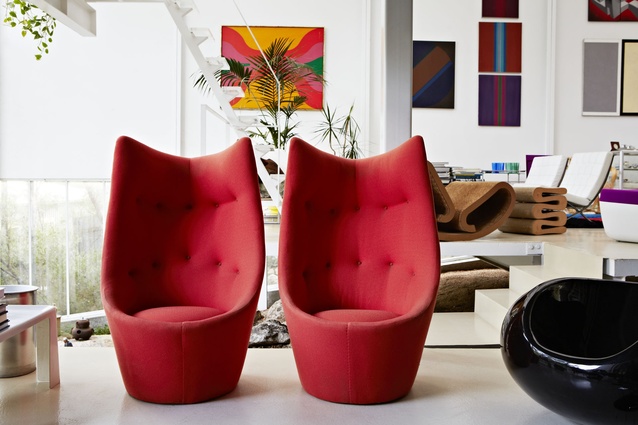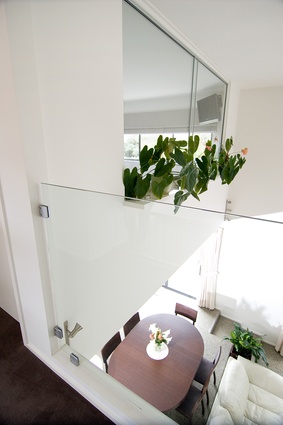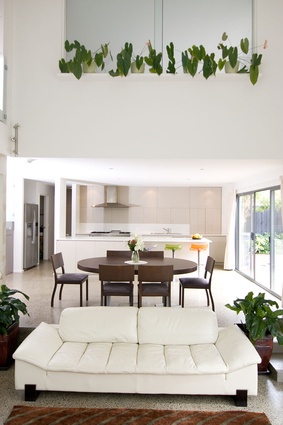Architect profile: John Henry
John Henry has a bad habit: collecting. The self-proclaimed addict lives in Melbourne with an impressive collection of architecturally designed chairs and an enviable art collection. You’ll have to wait to read about the architect’s home in Urbis Issue 80, but in the meantime, read about what inspires Henry in his architecture practice, John Henry Architects, and about his prized possessions.
Urbis: What does your work involve?
John Henry: I have always been interested in having a practice that produces high quality design. This includes various types of buildings, interior design and furniture design. We take on all types of buildings, ranging from health-care projects, aged-care facilities, retirement villages, including independent living units and high-quality, multi-unit residential projects.
U: How did you come to be an architect?
JH: I came into architecture in an interesting way. I was always interested in drawing and design. My father was a builder in Hamilton, Victoria, and he recognised those qualities. He always wanted to be an architect, but couldn’t study to be one because of the impact the Depression had on his parents and their ability to pay for his education. However, he read a lot of books on architecture and introduced me to Frank Lloyd Wright, whom he admired. He taught himself to be a designer of sorts by designing and building churches all over Western Victoria. In my latter teenage years, he encouraged me to become an architect instead of joining the family building company. He researched the architectural schools offering architectural courses at the time and suggested I go the Gordon Tech in Geelong (now Deakin University, Geelong campus).
U: Tell us about some of your past projects.
JH: My most prized work is my own home. I was determined to design a home for myself and my new wife. I asked her what was the most important thing for us and she replied by saying: “I want a home that we can uniquely call ours”. This was a daunting task and I had to do a lot of soul searching. I decided to look at all aspects of architecture that excited my development and to embrace them, rather than copy current fashions. It is a matter of developing your own style based on your love of architectural influences. So I did it and the resultant pictures tell the story. I have just completed a big health clinic in Wyndham Vale, which has influences from my love of the Metabolists and Brutalism.
U: How did your chair and art collections begin?
JH: After I completed the first three years of architectural study in Geelong, I transferred to RMIT to complete my studies. As an elective, I studied chair design. I don’t like sculpture as such but find that chairs are practical pieces of sculpture. As a teenager, I used to visit the Hamilton Art Gallery regularly. The Director at the time was John Ashworth and he noticed my interest in artworks and object design and he schooled me in appreciation. That passion has never ceased, so I collected pieces over the years based on my excitement of particular periods of modern art and design.
U: How did your collections influence the design of your Eltham home?
JH: The house was primarily built as a home. However, the idea was for it to be a gallery as well. The vast walls were to hang the artworks, but object design has taken over as my major passion now. I collect objects, mostly designed by architects. To me they are the best object designers.
U: What else inspired the design of your home?
JH: The four greatest influences on my development that can be seen in the home were Robin Boyd, Paul Rudolph, Frank Lloyd Wright and the Japanese Metabolists. There are elements of all these designers in the home. My love of the Australian bush was a huge influence as well. I wanted a retched Aussie garden and I also wanted it inside. My landscape designer said it was not possible, but we eventually made it work with lower Yarra River shaded plants.
U: What’s your favourite piece of furniture from your collection? How about your favourite piece of art?
JH: My favourite pieces of furniture are the two Grant Featherston Talking Chairs from the Montreal 1967 Expo, although I do love all of them. My favourite pieces of art are the Brett Whitely pictures. He is my all-time favourite artist. I loved his naughtiness and bohemian lifestyle. I always visit his studio when I go to Sydney.
U: What advice can you pass on to budding collectors?
JH: Ask yourself what you love and pursue those dreams, be relentless but not reckless, collect quietly and methodically and eventually you will have a great collection.

